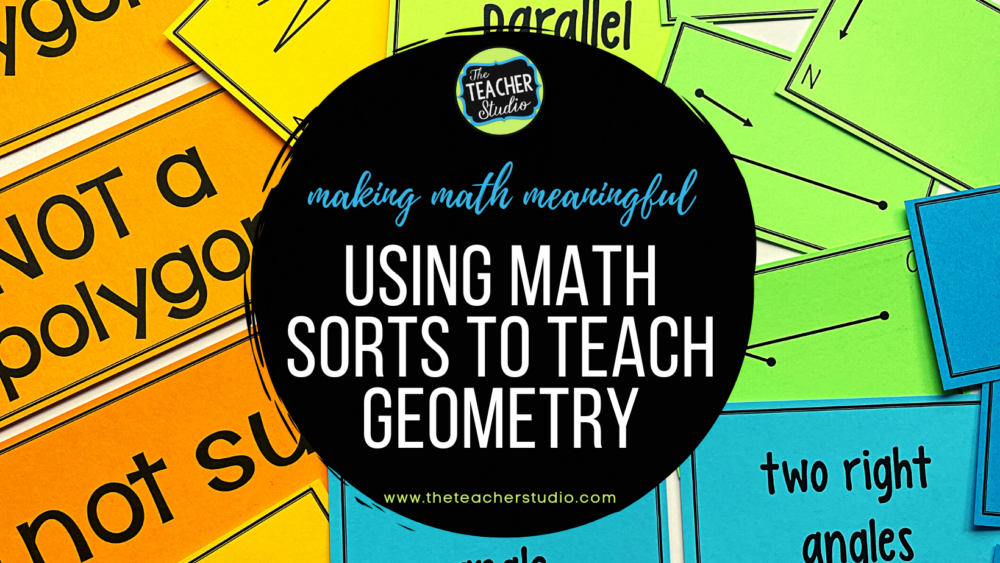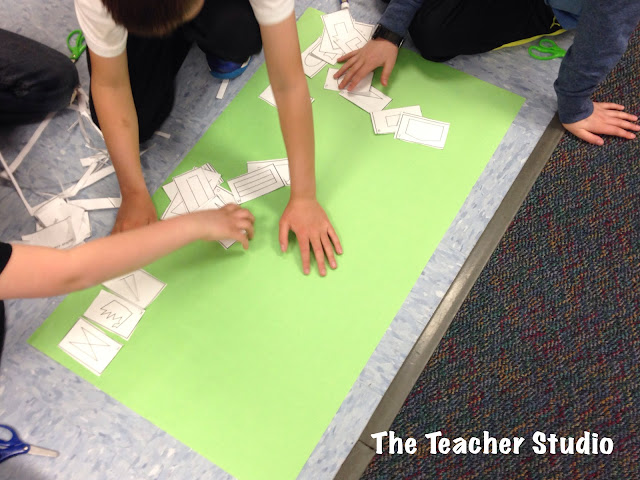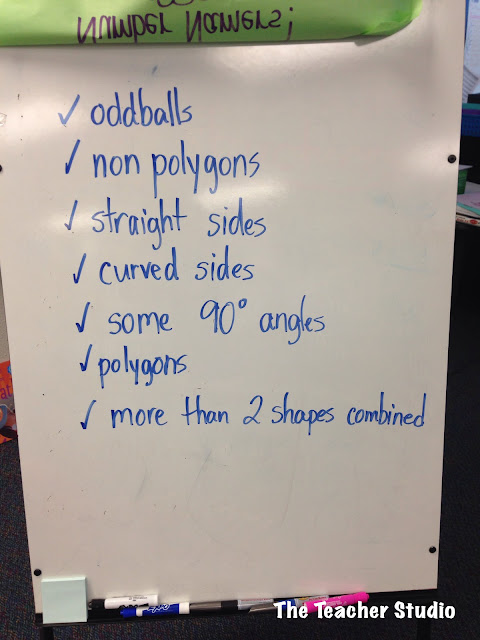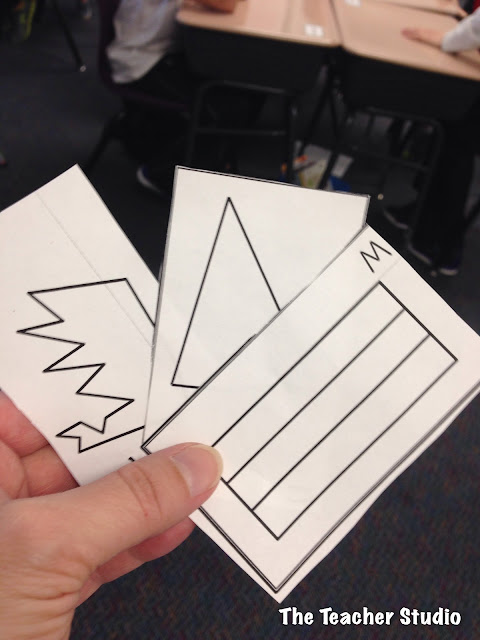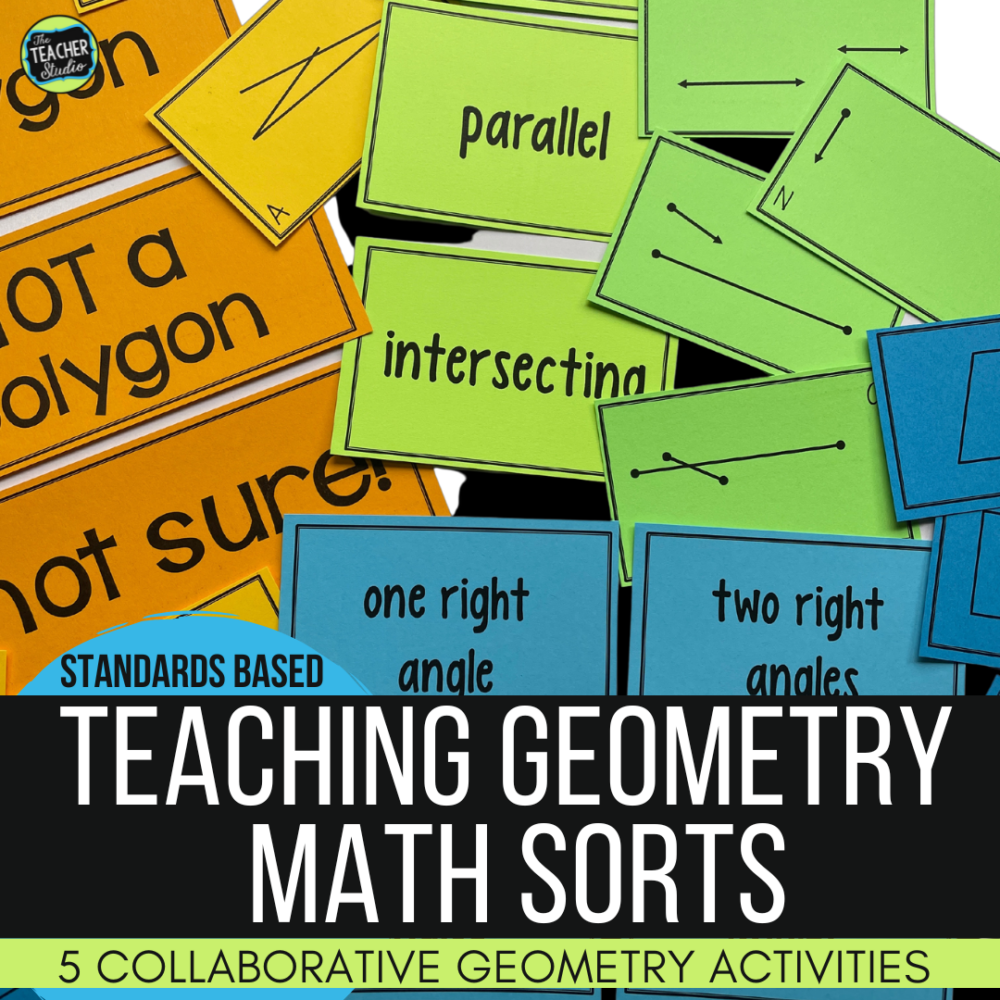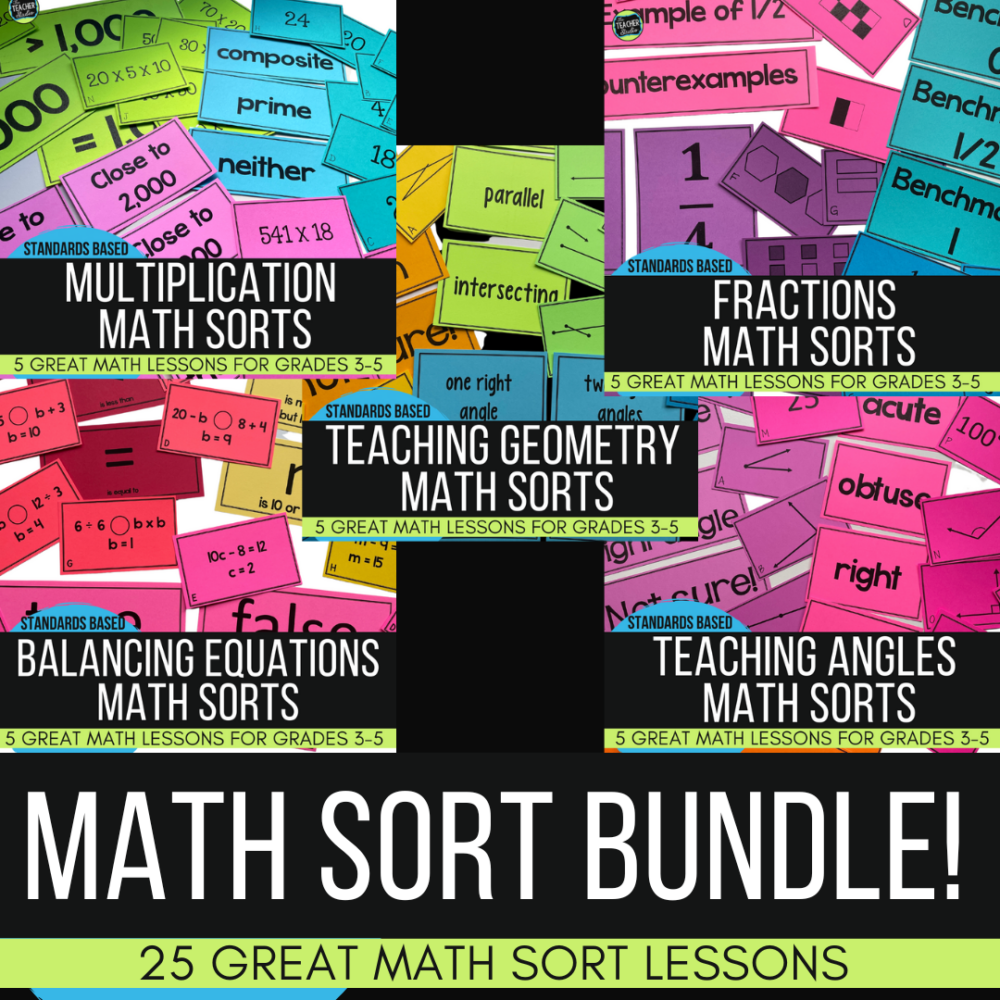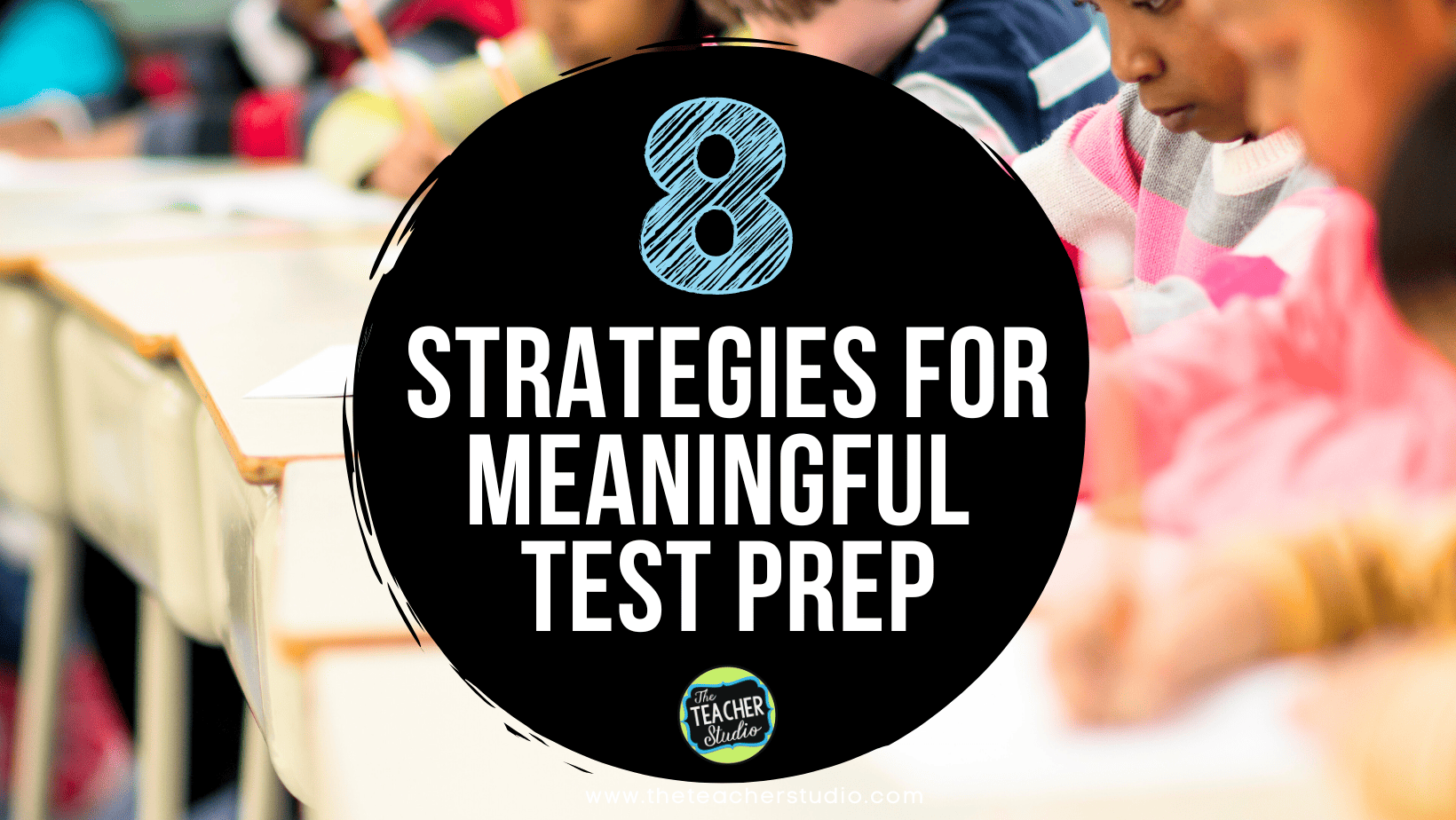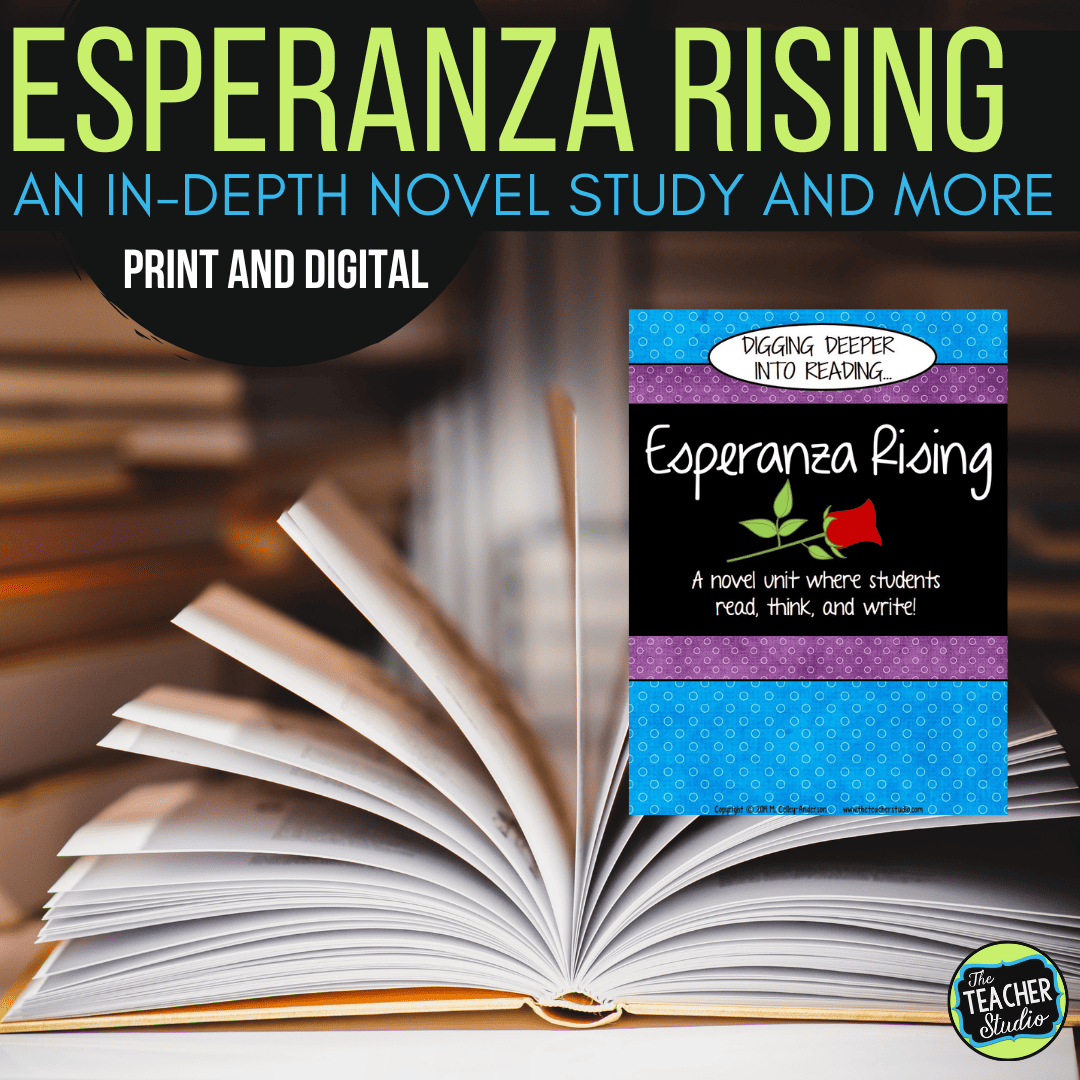If you have followed me for very long, you know that I find concept sorts particularly useful in math and the content areas as well–and I really believe it helps students make connections among ideas and help them to see how things are connected. In fact, two of Marzano’s effective teaching strategies–cooperative learning and identifying similarities and differences–are addressed with this activity. As we began our work with geometry, I knew that classifying shapes would be tricky for some students. If research has shown solid evidence that categorizing and finding similarities and differences works—I’m all for it!
Classifying Shapes: A Math Sort Activity
Here is how I tend to use these sorts—although please know that there is no RIGHT way! Get creative and let the students guide you as you go. Here is one example of a sort I did with my students. I started by splitting my class into groups of 3. (I like trios for lots of reasons…because it allows for better dialogue, it helps strugglers, and also allows for one extra person in case a third person gets pulled out of the group or has to leave for any reason!) For this sort, I gave each group a small piece of bulletin board paper for them to do their sort. For this sort, I made the decision to NOT give them their “headers” until later…stay tuned for why!
As my students sorted, I simply walked around and eavesdropped! It was a great time to listen for math language, to listen for any misconceptions, and to see who was feeling confident and who was not. After a few minutes of sorting, I pulled the students together to ask what categories they had picked. As you see, these sorts are as much for ME to learn about my students as they are for my students to learn about math!
Classifying Shapes: What did we notice?
So I brought the students to the whiteboard and we talked about HOW they decided to sort their cards into categories. Asking students to sort WITHOUT categories is definitely more complicated than giving them the headers, so you have to decide what you are trying to accomplish. I wanted to see if students already knew what polygons were based on their “math talk”. I learned the answer was “NOPE!”
This sort was designed to be an example/counterexample sort. I wanted the students to decide if the shape shown on the card was a polygon or not a polygon. In this case, I purposely filled the sort with shapes I thought might be tricky—and my theory proved to be correct!. I found several misconceptions that needed to be addressed with the class when we finished our sort. Classifying shapes can be done in so many ways, but without pushing students to do challenging work, we never find how to really overcome math misconceptions.
Great Math Discourse!
For this sort, I also decided to include a “not sure” category which I hoped would encourage students to have quality dialogue. If they could not come to agreement, they simply put the card in the “not sure” category. It prevented the really vocal ones from taking over! I gave the students a total of 15 minutes to do this job—and there were a few groups that did not get every card sorted. That’s okay. If I had given some groups 45 minutes, they may not have finished!
Up next? A gallery walk to check out what the other groups did!
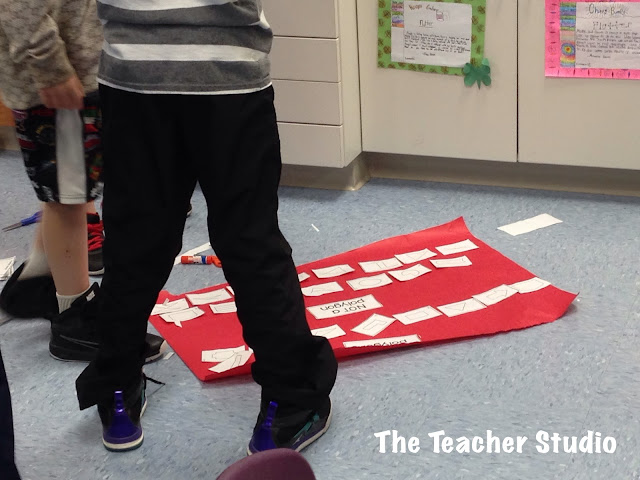 Although actually DOING the sort is a valuable activity, gallery walks can add a whole new level of critique to the lesson! Sometimes I even have each trio take a post it note and cut it into three “tags”. They can “tag” up to three spots on other groups’ papers where they felt an error was made. After going over the key information I wanted the students to know, we talked about some of the trickier cards! These three really stumped some groups!
Although actually DOING the sort is a valuable activity, gallery walks can add a whole new level of critique to the lesson! Sometimes I even have each trio take a post it note and cut it into three “tags”. They can “tag” up to three spots on other groups’ papers where they felt an error was made. After going over the key information I wanted the students to know, we talked about some of the trickier cards! These three really stumped some groups!Getting students thinking!
We really stress the dialogue and thinking more than always worrying about who got them all right…these are experience-builders and all misconceptions DO get addressed through our lessons and instruction. The entire activity took us 25 minutes from start to finish and was a great kick-off for our unit. Before you read on–don’t miss this opportunity to try an algebraic thinking sort to start working concept sorts into YOUR planning. Click the image below to grab it!
 Check out some pics from another one of my classifying shapes sorts. For this one I used the “flag” technique which also prompted us to have an impromptu debate!
Check out some pics from another one of my classifying shapes sorts. For this one I used the “flag” technique which also prompted us to have an impromptu debate! |
| During our gallery walk on THIS sort, students placed “flags” on cards they thought might be out of place. Then the students returned to their “home” papers and studied the flagged cards. |
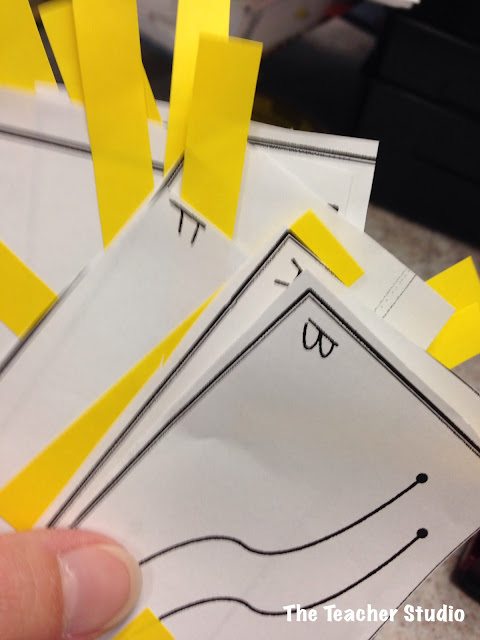 |
| We had a handful of cards we needed to talk about! |
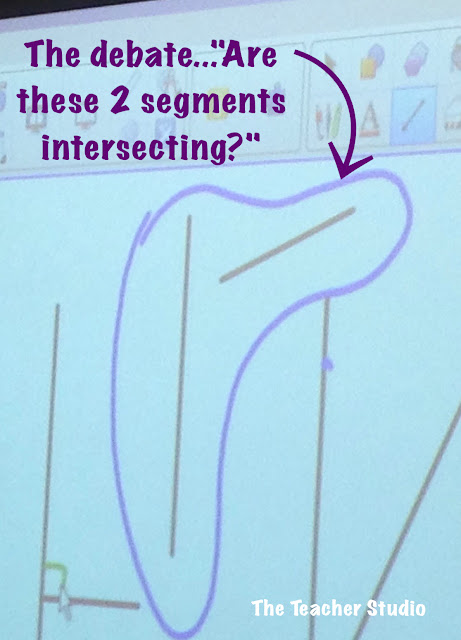 |
| Which led to a HUGE debate about whether or not these two segments are intersecting…we had a GREAT discussion about the difference between segments, rays, and lines. |
So…hope you are intrigued enough to try some sorts on your own! It’s not hard to do–even make some samples of your own on index cards and try the sort as a whole class! If you are interested in checking out my geometry sorts, just click here or on the image below! Have a great week!
Or check out THIS POST for even more tips about using math sorts in your classroom!


